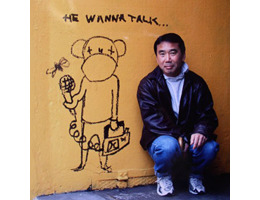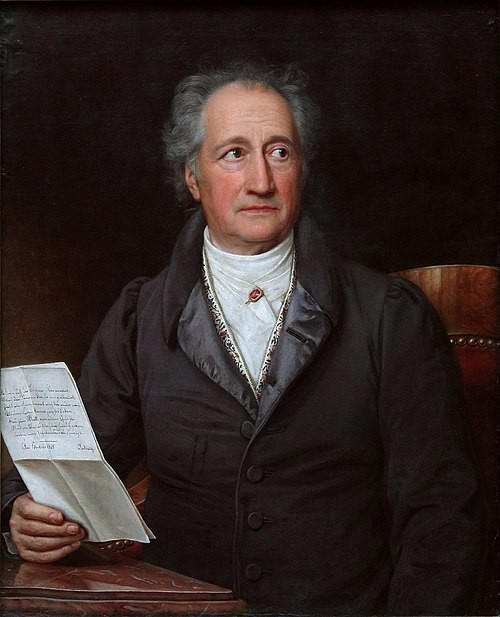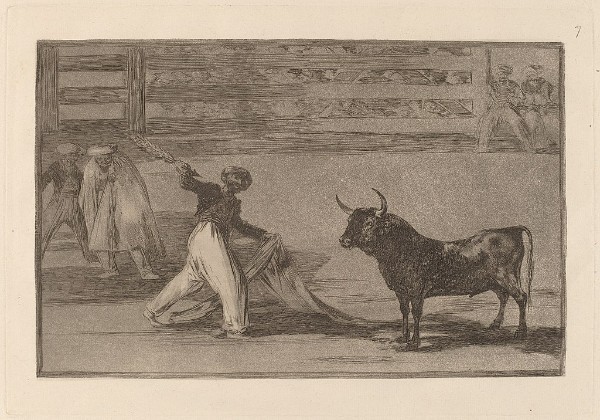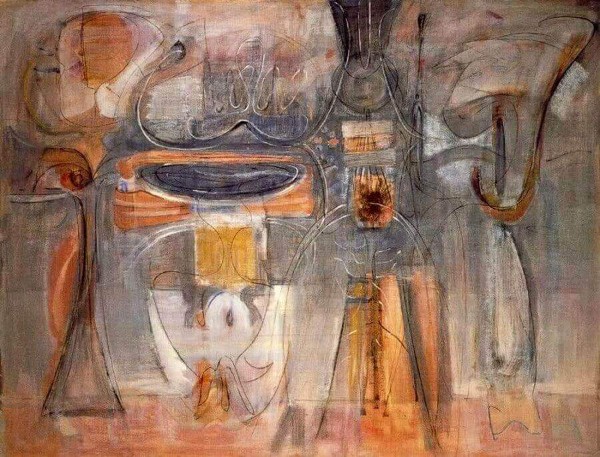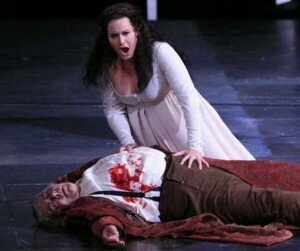
Donna Anna and the body of her newly slain father, The Commendatore (Met Opera, 2016)
Mozart: Don Giovanni, K. 527: Act I Scene 1: Introduzione: Notte e giorno faticar (Bo Skovhus, Don Giovanni; Janusz Monarcha, The Commendatore; Adrianne Pieczonka, Donna Anna; Renato Girolami, Leporello; Hungarian Radio Chorus; Nicolaus Esterházy Sinfonia ; Michael Halász, cond.)
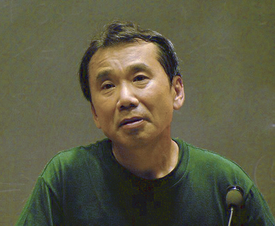
Haruki Murakami © Wikipedia
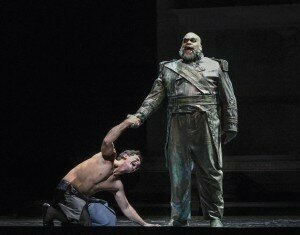
The Commendatore lays fatal hands on Don Giovanni (Dallas Opera, 2018)
There’s a mysterious neighbor, Menshiki, who made his fortune in the tech business, and who has lost a daughter along the way. There’s the mysterious bell that rings in the night. There’s the mysterious entity, a personified idea who takes the name ‘Commendatore,’ which appears but that must be invited to enter a house. So many stories and so many details, that it’s almost as though the reliability of music is a relief.
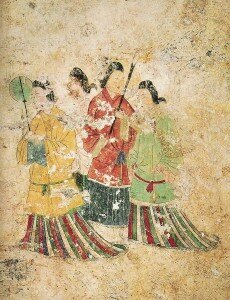
Women’s clothing in a wall mural from the west wall of the Takamatsuzuka Tomb, late 7th century, Asuka period
To occupy the mind of his models as he paints, our artist put, for example, the operas Der Rosenkavalier and, of course, Don Giovanni on the turntable (no CDs here!).
Strauss: Der Rosenkavalier, Op. 59, TrV 227: Act I: Wie du warst! Wie du bist (Claire Watson, The Marschellin; Brigitte Fassbaender, Octavian; Bavarian State Orchestra; Carlos Kleiber, cond.)
We have Beethoven and Schubert string quartets, and a preponderance of German music in the house owner, the painter Tomohiko Amada studied in Germany. He does have recordings of Verdi and Puccini but Amada’s love is clearly German operas. Our narrator dismisses the recordings of Tchaikovsky, Rachmaninoff, Sibelius, Vivaldi, Debussy, and Ravel as ‘obligatory.’
Schubert: String Quartet No. 13 in A Minor, Op. 29, No. 1, D. 804: I. Allegro ma non troppo (Takács Quartet)
On the jazz side, we have Thelonious Monk, with Coleman Hawkins and Coltrane on his Monk’s Music album, Billy Holiday, Clifton Brown, and Tony Bennett.
Thelonious Monk: Monk’s Music: Ruby My Dear
His rock listening is a bit more adventurous, spanning albums by The Rolling Stones, The Doors, The Beatles and The Beach Boys from the 1960s to Roberta Flack in the 1970s and ABC and Bruce Springsteen in the 1980s. He takes particular delight in these albums, noting:

Bruce Springsteen © Wikipedia
Springsteen: Independence Day: The River
Springsteen: Independence Day: Hungry Heart
Yet, all of this is an old-fashioned attitude, he spends his time playing music of the past, in an old format. And our narrator himself is turning old-fashioned. He no longer wants to spend his time turning out his highly lucrative ‘commercial’ portraits; he wants to paint for himself. Yet, in the end, in a proper 21st century way, he can’t sustain this life: he returns to his wife (she never filed the divorce papers) and resumes the commercial painting that he’s so good at. The artist’s house burns down and the painting, Killing Commendatore, is destroyed. All returns to normal, for a given value of normal.


